A Bathing Ape, affectionately known as BAPE, has established itself as more than just a fashion label; it’s a cultural phenomenon that intertwines the vibrancy of street fashion with Japanese meticulousness and global influences. Founded in the early 90s by the visionary Nigo in Tokyo’s Ura-Harajuku, BAPE started as a ripple in the vast ocean of fashion but quickly surged to tsunami levels, sweeping across continents and capturing the hearts of fashion enthusiasts and street culture aficionados alike.
From its inception, BAPE has been emblematic of the youth’s rebellion against conformity, embodying a unique blend of music, culture, and fashion. Nigo, inspired by his own eclectic tastes that ranged from American music icons to Japanese pop culture, infused BAPE with a sense of playfulness and exclusive luxury, often highlighted by the brand’s iconic ape head logo and the use of vivid and intricate designs. This blend of high-quality craftsmanship and street-level cool has not only defined BAPE’s aesthetic but has also cemented its place as a stalwart of streetwear globally.
The brand’s narrative is intertwined with its founder’s personal history and Tokyo’s urban landscape, where fashion is not just about clothing but a statement of identity. From the streets of Harajuku to high-end fashion districts across the world, BAPE’s journey reflects a relentless pursuit of growth and transformation while staying true to its roots. The story of BAPE is not just about clothes; it’s about how these clothes have come to symbolize a lifestyle, an attitude, and an unwavering commitment to breaking barriers. Whether through strategic collaborations with the likes of Pharrell Williams or through limited-edition releases that send fans into a frenzy, BAPE continues to innovate and inspire.
Now, as collectors and aficionados seek to distinguish the nuances of vintage BAPE items, understanding the evolution of its logos and tags can be crucial. The following guide delves into the distinct characteristics of BAPE’s designs through the decades, providing enthusiasts with the knowledge to identify and appreciate the vintage treasures of a brand that has continuously redefined street fashion.
Incredible “World Wide Bape Heads” Show
How to tell if A Bathing Ape is vintage from the logo
A Bathing Ape, commonly known as BAPE, has become synonymous with the evolution of street fashion, blending Japanese culture with global street style. Founded in 1993 by Nigo in Tokyo, the brand quickly rose to prominence with its unique designs and iconic ape head logo. This logo has not only served as a brand identifier but also as a cultural statement, making it a coveted element in the world of fashion enthusiasts and collectors alike.
Understanding the nuances in the BAPE logo over the years can be quite fascinating. While the core design remains consistent, slight variations in its representation and style can help identify the era of production, which is particularly useful for collectors and fashion historians. This guide aims to detail the features of the BAPE logo from its inception to the present, ensuring aficionados can recognize and appreciate the subtleties of its design evolution.
1993 to now A Bathing Ape logo
- The original logo features the classic ape head which is detailed and recognizable, often seen in a straightforward brown hue.
- It is typically accompanied by the “A Bathing Ape” text in bold, stylized font circling the ape head, creating a distinctive emblem that has remained largely unchanged.
- Minor variations can be seen in the color and detail of the ape head over the years, such as changes from a more detailed face to a simplified version, and shifts in the background color or texture.
- This logo has been used consistently since the brand’s inception, appearing on a wide range of products from clothing to accessories, making it a staple of BAPE’s branding.
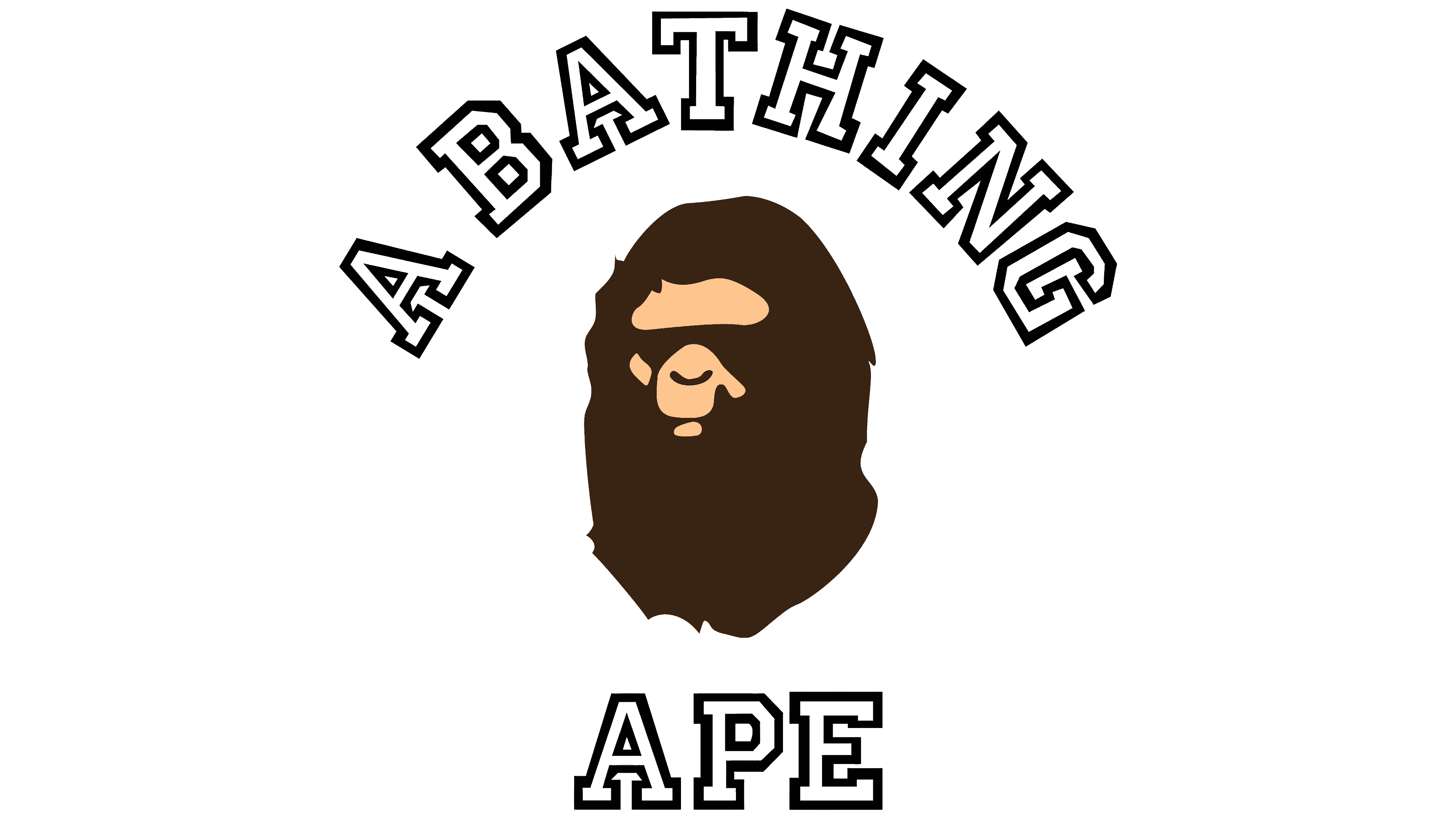
1993 to now A Bathing Ape logo
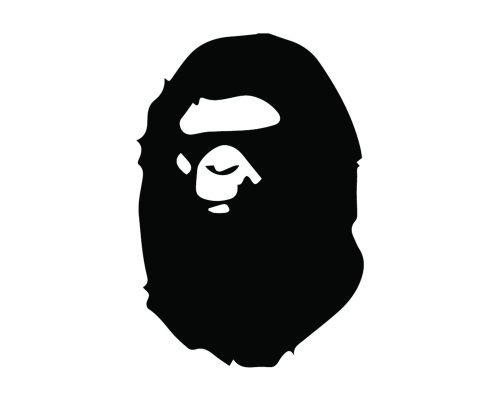
1993 to now A Bathing Ape logo
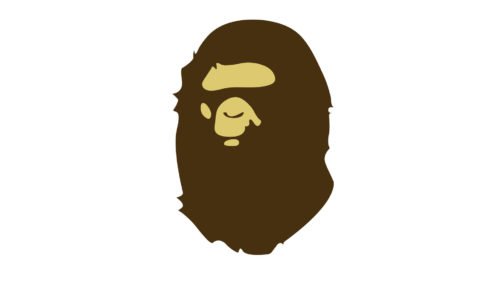
1993 to now A Bathing Ape logo
How to tell if A Bathing Ape is vintage from the tags
A Bathing Ape, commonly known as BAPE, has been a significant figure in the streetwear landscape since its inception in 1993 by Nigo in Tokyo, Japan. Known for its bold and distinctive designs, including the iconic ape head logo and the camouflage pattern, BAPE has cultivated a strong following among youth culture and music artists, influencing fashion trends on a global scale. This guide aims to help collectors and fashion enthusiasts identify the vintage of BAPE clothing through changes in the brand’s tags over the decades.
BAPE’s tags have undergone several transformations, reflecting the brand’s evolution and response to its growing popularity. The tags not only indicate authenticity but also provide a timeline that helps in pinpointing the era of production. Each era brought its own unique style to the tags, which are often the easiest way to determine the vintage of a piece. Let’s explore the different tag designs from the 1990s to the 2010s.
Can’t identify those vintage tags or labels? Submit a picture on our vintage tag identification page, and we’ll help you out!
1990s vintage A Bathing Ape tags
- Early tags from the 1990s feature a simple and bold design, often with the APE SHALL NEVER KILL APE slogan in a distinct, rugged font.
- The ape head logo is prominently displayed, but with less detail compared to later versions.
- Tags from this era may lack the ‘R’ for registered trademark, which became more consistent in subsequent decades.
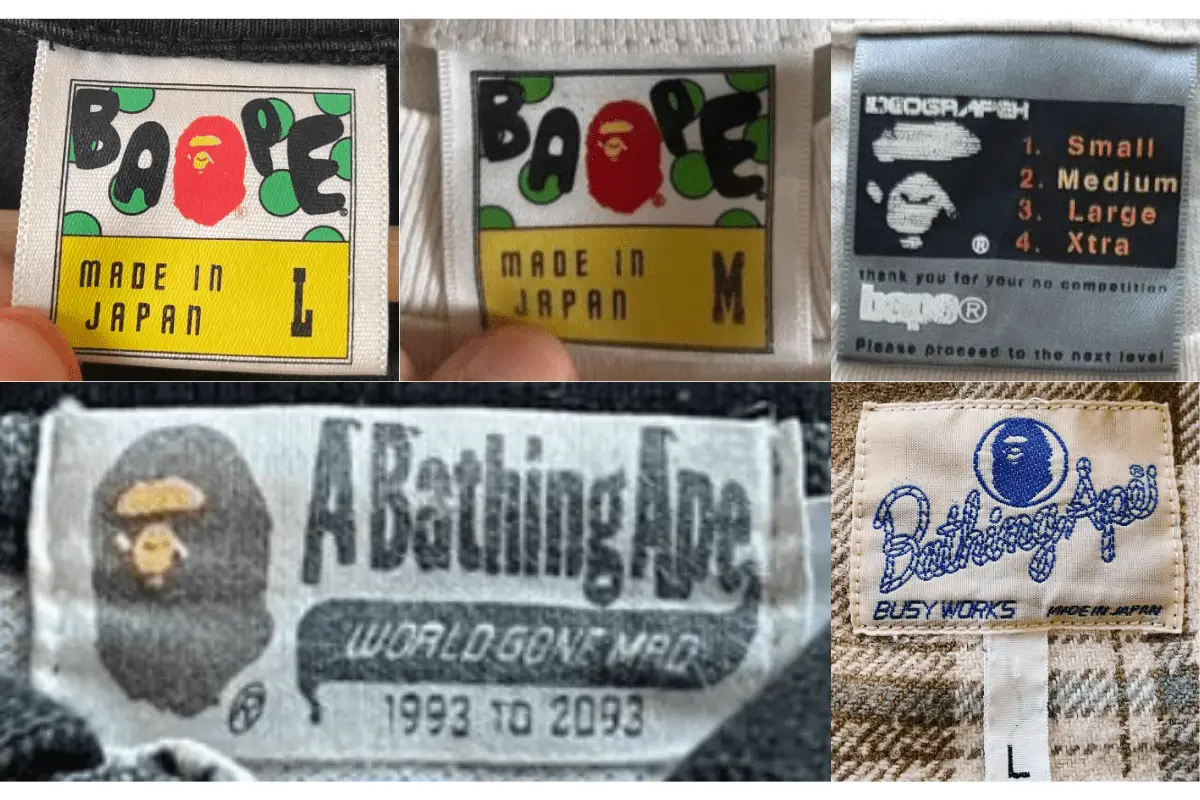
1990s A Bathing Ape tags
2000s vintage A Bathing Ape tags
- The 2000s saw a transition to more polished tag designs, reflecting the brand’s rise in global popularity.
- Tags often included more complex graphics and sometimes additional text about the brand’s philosophy or origin.
- The introduction of holographic tags and other anti-counterfeiting measures became more common to combat fakes.
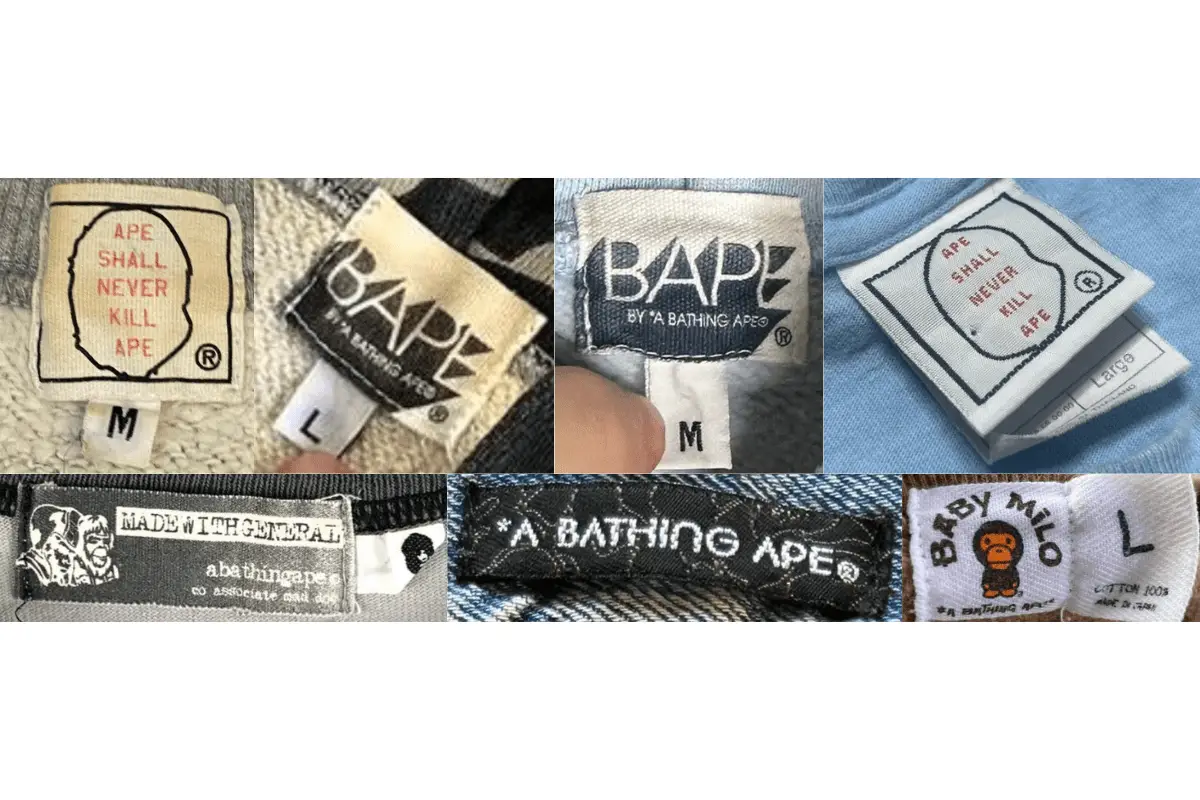
2000s A Bathing Ape tags
2010s vintage A Bathing Ape tags
- Recent tags from the 2010s show a further refinement in design, with cleaner lines and a more modern typeface.
- The ape head logo is now highly detailed and consistently includes the registered trademark symbol.
- Some tags also feature special collaborations or limited edition series, indicating the brand’s expanded influence and collaborations.
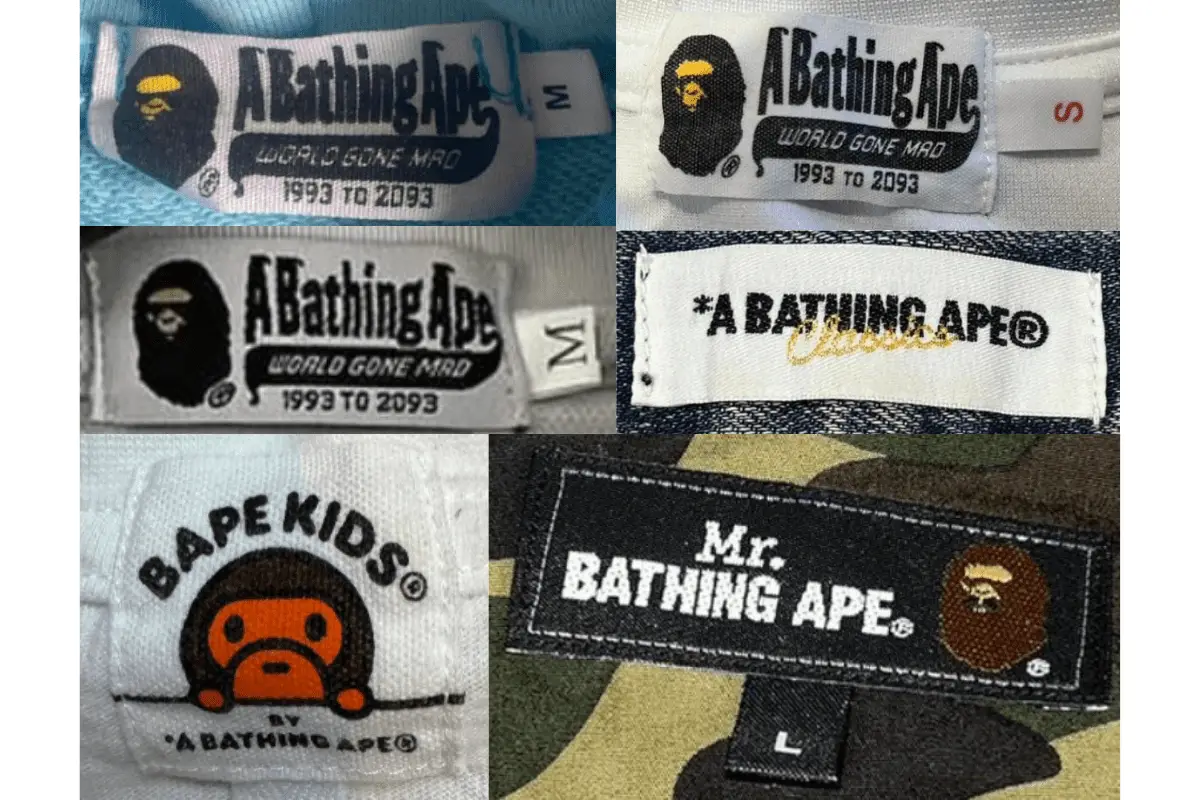
2010s A Bathing Ape tags
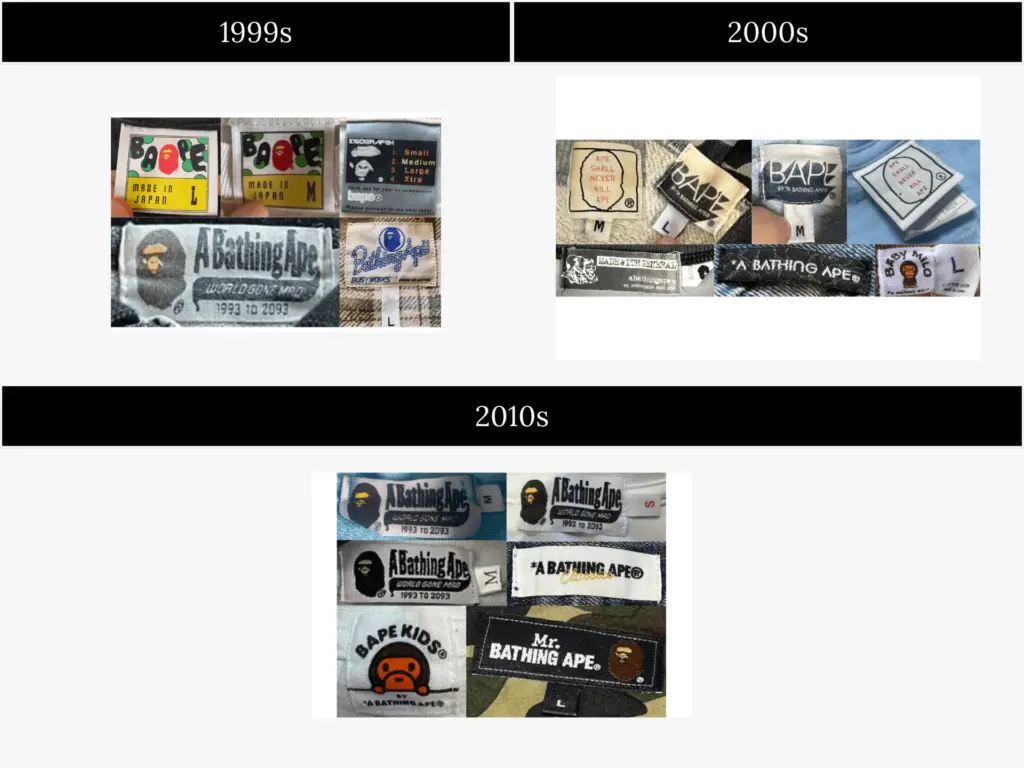
A Bathing Ape tags by Year





I wonder if this hoodie is regular and when it will be produced